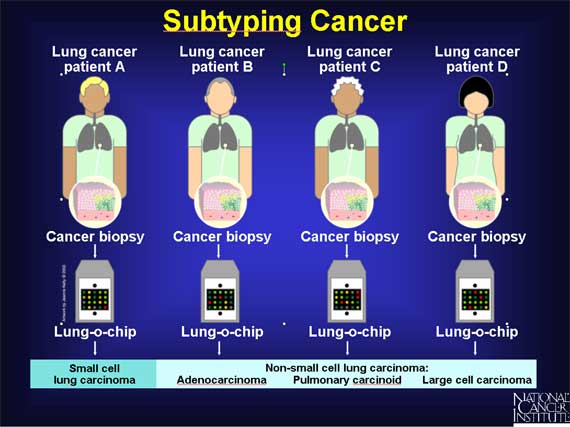|
Researchers also use microarrays to detect differences in patterns of gene activity even within the same tumor type. In many cases, researchers have discovered that what had been considered a single type of cancer--based on how the cells looked under a microscope--was really two, three, or even more subtypes, each with a distinct gene expression pattern. For example, using microarrays, researchers have identified new types of leukemia and discovered that the most common type of lung cancer (lung adenocarcinoma) is actually four distinct types of cancer, each with its own gene expression pattern.

< Previous | Index | Next Slide > |